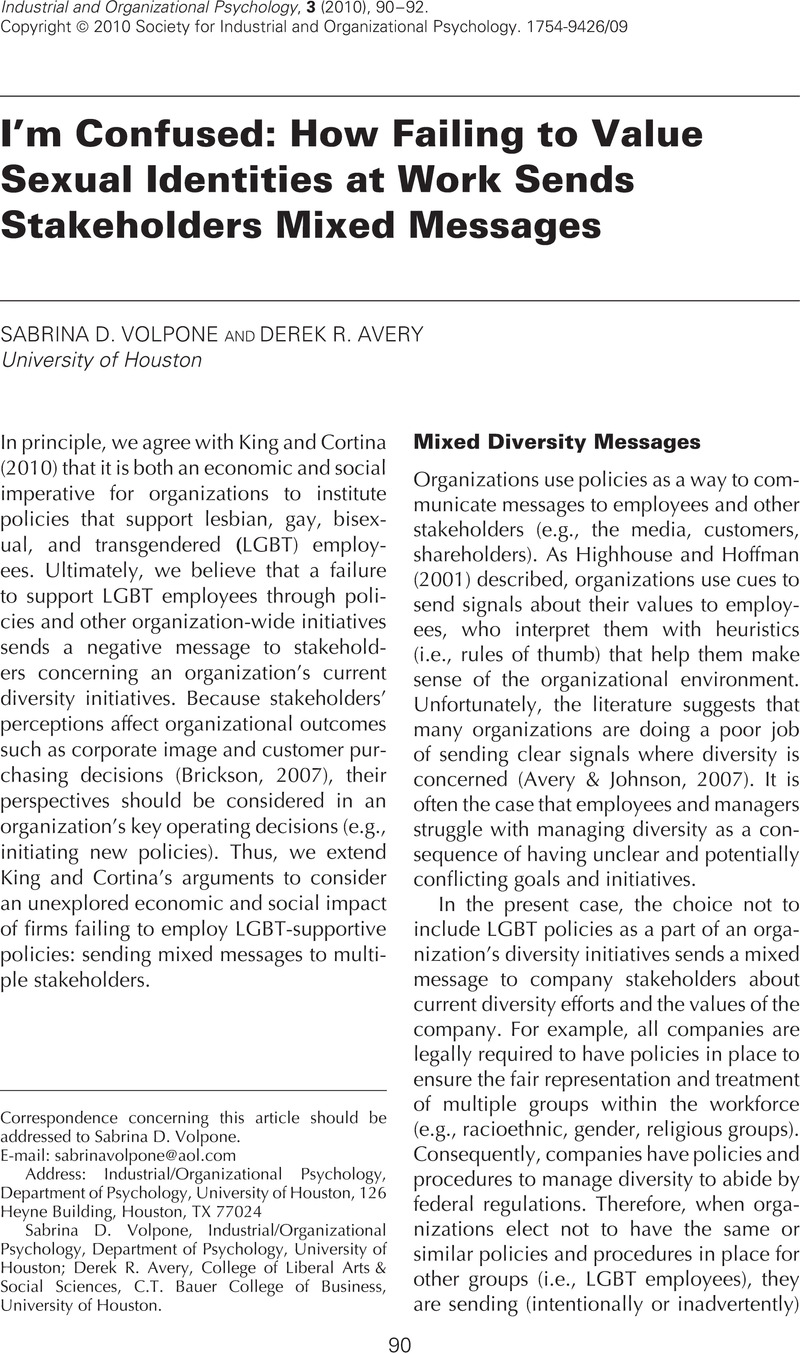Crossref Citations
This article has been cited by the following publications. This list is generated based on data provided by Crossref.
King, Eden B.
and
Cortina, José M.
2010.
Stated and Unstated Opportunities and Barriers to Lesbian, Gay, Bisexual, and Transgendered Supportive Organizations.
Industrial and Organizational Psychology,
Vol. 3,
Issue. 1,
p.
103.
Stewart, Robert W.
2011.
You Support Diversity, But Are You Ethical? Examining the Interactive Effects of Diversity and Ethical Climate Perceptions on Turnover Intentions.
Journal of Business Ethics,
Vol. 99,
Issue. 3,
p.
453.
Stewart, Robert
Volpone, Sabrina D.
Avery, Derek R.
and
McKay, Patrick
2011.
You Support Diversity, But Are You Ethical? Examining the Interactive Effects of Diversity and Ethical Climate Perceptions on Turnover Intentions.
Journal of Business Ethics,
Vol. 100,
Issue. 4,
p.
581.
McCalla, Scott A.
2015.
Policy Characteristics for the Prevention of Workplace Bullying Anteceded by Heterosexism: A Delphi Study.
Journal of Psychological Issues in Organizational Culture,
Vol. 6,
Issue. 2,
p.
39.
Adikaram, Arosha S.
and
Chathuranga, M. M. Nirmal
2025.
Taking the bull by the horns: creating and maintaining LGBT inclusivity at a local group of companies in Sri Lanka.
International Studies of Management & Organization,
p.
1.



